The role of the private sector in education has become important for bringing technology to the myriad classrooms located in different parts of the country. Government has started focussing on public private partnership to take education to a different level. While celebrating its 75th issue, digitalLEARNING has invited private sector companies in education to discuss on how digital technologies are developing. Stalwarts from the private sector shared their vision on education in India and on their wish list from the government
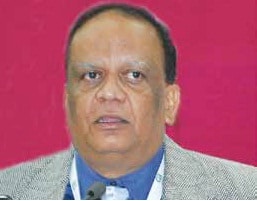 K S Muralidhar
K S Muralidhar
CEO, Learnsmart India Pvt Ltd
State of Digital education in 2011
In 2011, Aakash Tablet was launched but no one knows what could be the outcome of the same. Education technologies are shaping up well. However,connectivity and power remain a challenge.
Expectations for 2012
We expect Right to Education to be implemented fully. There are too many challenges to give compulsory education. Let us hope that ministry would come out with some implementable policies. I hope that the mindset will change in principals and school owners. Connectivity will increase in 2012.
Trends to rule 2012
Any adoptable technology will rule the roost. However, web based technologies have to wait for a long time India because of connectivity and power.
 Dr Dheeraj Mehrotra DGM (K-12), S Chand Harcourt India Pvt Ltd
Dr Dheeraj Mehrotra DGM (K-12), S Chand Harcourt India Pvt Ltd
State of Digital education in 2011
The year 2011 saw a broad amount of success in the field of digital education in India, but we are yet to have an impact on larger sections of our students. Much more work needs to be done to ensure that e-learning becomes the preferred mode of delivering education.
Expectations for 2012
There has to be a new action from CBSE and other boards to ensure that adequate priority is given to digital framework of knowledge delivery in schools. The development through iPads and other assisting e-learning solutions have paved way to a novel mode of learning at schools.
Trends to Rule 2012
The leads in 2012 shall be iPad based knowledge support and online delivery of knowledge where the teachers shall remain portal to being just facilitators.
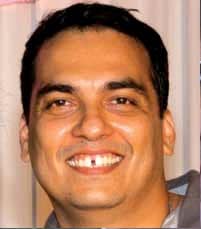 Ninad Vengurlekar
Ninad Vengurlekar
Vice President, IL&FS Education
State of Digital education in 2011
The year 2011 saw a greater acceptance of technology based education in schools. The digital education market has stabilised in schools in terms of offerings, quality, pricing as well as understanding. However, the biggest challenge is to further enhance the scope of digital technologies in our education system.
Role of Education Technologies
Education Technologies are shaping up rapidly in India. Learning is now being delivered through mobile phones and TV. Telecom operatorsare now waking up to this new untapped opportunity. DTH operators are building exclusive interactive educational channels for children and youth.
Expectations for 2012
The problem is not technology; the problem is of content that can guarantee learning outcomes. When world class learning content comes into play on world class technologies then magic will happen in education.
Trends to Rule 2012
I have great hopes from the stretch of high speed internet that runs across millions of homes and educational institutions across India. Small start-ups or even individuals can then start online schools, tuition classes and allow children, youth, housewives, employees, senior citizens to learn and educate themselves at their own pace.
Prof Pawan Gupta Educational & Management Consultants, SoftTech Engineers Pvt Ltd
State of Digital education in 2011
Digital Education in India is still in infancy. Even though many schools have adopted Smart classrooms, most are yet to make a move in that direction. If India wants to join the group of rich nations, then it has to use modern technological means in a big way for educating our youngsters. Leveraging of digital technology is the solution.
Expectations for 2012
State and central governments should make provision for much more financial
outlays for purchasing quality digital content.
Trends to rule 2012
Education for all will be possible only through the digital learning. Wish list to the government for policies, PPP Government should have a policy to understand the quality of content.
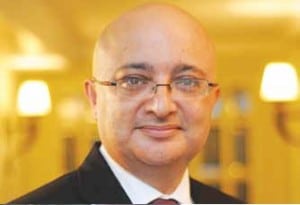 Rajiv Bhalla
Rajiv Bhalla
Associate Vice President and Country Head, Sales & Marketing, NEC India
State of Digital education in 2011
The Indian education system has shown a sustainable growth over the past few years. Moreover, the advent of interactive technology in education system has given a boost to the overall Indian education system. The advanced technology tools are sure to better equip the teachers in imparting knowledge to students.
Technology trends to rule 2012
In the coming year, India’s education sector is likely to step up its IT spending. Increased spending is necessary if we wish to modernise the teaching learning process. The advent of 3D technology in education system is surely going to mark a revolution in the education sector as this is bound to better equip the teachers in imparting knowledge
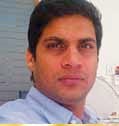 Sudarshan Borker Founder-Business Head, Innovative Education
Sudarshan Borker Founder-Business Head, Innovative Education
Concepts
State of Digital education in 2011
The year 2011 has been a great year for digital education. It has been the year of awareness and information. It has been a year of reaching out to the schools across India through seminars, conferences, and exhibitions. It has been a year when India has geared for next phase for digital education. With the increasing reach of broadband connectivity in India, there is scope and opportunity for developing new educational applications and solutions. Technology Trends to Rule 2012 Teacher friendly low cost solutions will emerge as a trend in 2012
Expectations from 2012
We expect the successful implementation of the RTE and more focus on the teacher training programme and enhancement of the work in education. Wish list from government for policies, PPP We expect that government should focus on teacher training programme to recognise and encourage teachers to teach; CCE implementation must be at all levels. We are also looking for IT Certification programme specially developed for teachers, recognition of innovative practices by the teaching community.
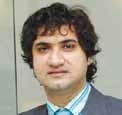 Sanjeev Mansotra Chairman and Group CEO, CORE Group
Sanjeev Mansotra Chairman and Group CEO, CORE Group
State of digital education in 2011
Education customers in India are going beyond IT enabled education practices like multimedia, IT enabled classrooms, etc. to transformational solutions that are based on more outcomes. Indian education system has long way to go, and government has taken some positive steps on CCE and it is expected to show results over the period of time.
Wishlist to the government for policies, PPP
India needs significant improvement in quality of education. Hence the governments at all levels should encourage PPP initiatives through infrastructure support, tax breaks, co-funding of local IP creation and the facilitation of capacity building of industry manpower.
Trends to rule 2012
We have seen various states adopting cloud based solutions, Software as a Service (SaaS), Platform as a Service (PaaS) in their operations and we expect these demands to grow to next level.
Nirmal Singh
Co-Founder and CEO, WheeBOX
State of Digital education in 2011
New partnerships are being forged in the education space. Private participation has extended beyond NSDC and many companies have come forward. Axis Bank and Bandhan jointly launched an Rs.100-crore initiative on providing skills training and assets to the marginalised in West Bengal. Education technology will play a larger role in integrating all modes of education.
Expectations for 2012
Government is unveiling a new manufacturing Policy that promises 100 million new jobs. The government should focus on using technology in education space, as this will lead to creation of new jobs.
Trends to rule 2012
Online Assessment,Analytics, and Virtual Delivery of classroom Wish list to government for policies, PPP PPP initiatives must play a major role in all forms of education. We need to get more private players involved in National Literacy Mission, Vocational Job Creation, and Upgrading Education Technology Solution in Higher Education Ecosystem
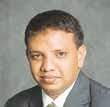 Mohammed Ghouse Regional Sales Manager (South & Western Asia), Luidia
Mohammed Ghouse Regional Sales Manager (South & Western Asia), Luidia
State of Digital education in 2011
Indian education technology market is a “complete” market in the sense that there is enough scope for the industry to keep growing for many years to come. There is no end to interactive technologies that are being developed, there is easy availability of digital contents and there are millions of classrooms where
systems can be installed.
Wishlist to the government for policies, PPP
There must be enhanced financial provision for implementation of quality products in our schools.
Technology trends to rule 2012
Interactive and assessment technologies will continue to flourish.The customer will look for more features beyond just interactivity.
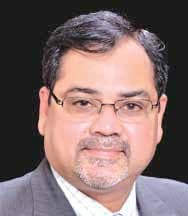 Sanjiv Pande Country Director, India and South Asia, for SMART Technologies
Sanjiv Pande Country Director, India and South Asia, for SMART Technologies
Digital Education in 2011
India has made extraordinary advances in education in recent years, but there is still a long way for us to go. India’s education sector is poised for substantial growth and progress.
Technology Trends to Rule 2012
There will continue to be product innovation and development with regards to
classroom technology. In India, less than 1 percent of classrooms currently have access to an interactive whiteboards (IWB), so there is clearly room for growth. The teacher’s computer becomes the classroom computer, allowing the full class to explore and understand together. Another clear trend is the increasing availability of quality digital resources.
Wish-list to the government for policies, PPP
The existing schools in the rural areas are lacking infrastructure and quality learning materials and are unable to adhere to set standards. The scope of higher education in villages and small cities is understandably scarce and is marked with major roadblocks of poor infrastructure, shortage of teachers and basic amenities like electricity. High student dropout rate is another major challenge
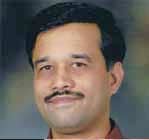 Kannan Bharadwaj CEO,Math Buddy
Kannan Bharadwaj CEO,Math Buddy
State of Digital education in 2011
Education technology market is still a highly under penetrated and there is lots of opportunities for making a difference. Schools have started to see value in the use of technology and more importantly, they started to see the difference it can make in a student’s level of understanding.
Wish-list to the government for policies, PPP
I believe that the area that requires a lot of focus is training of teachers in the use of technology in the classrooms. Setting up of technology should be accompanied by making teachers comfortable with these technologies. Government needs to set up agencies that will help overcome the gap in teacher
training and have certification programmes that will serve as a requirement for the teachers so that they actually use what they get trained in.
Technology trends to rule 2012
Proliferation of affordable tablets will surely be one of the biggest drivers for 2012. While I am a little skeptical whether this is going to make an immediate impact on a student’s learning, the cost of a tablet should surely make it attractive for many parents to get one and try it out. The online market should open up even more, with internet penetration getting better and 3G getting even cheaper.
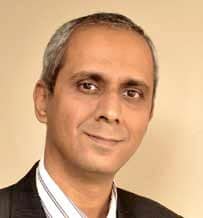 Srikanth Iyer COO, Pearson Education
Srikanth Iyer COO, Pearson Education
State of Digital education in 2011
In terms of technology, the Tablet has been a big breakthrough. Once the textbooks are available in digital format, they can be accessed through the Tablet. This will become the tipping point that will actually encourage a movement towards e-books. The education technology market is still at a nascent stage in India and we see fantastic growth potential. Primarily this is because, as a culture Indians and Indian parents take education very seriously.
Wish-list to the government for policies, PPP
My wish list would be that the government should implement PPP in running of schools, Currently I can see that there are 6-7 thousand rupees being spent on every child per year. While this money goes out of the government’s coffers, the full value of this amount is not reaching the child. By partly privatising this and implementing PPP in schools, I think the government can resolve the problem. I expect the government to divert more money in equipping classrooms with technology and not just the labs in government schools.
Technology trends to rule 2012
Tablets will take the path of ascendency. I see it as a leading trend in 2012 also
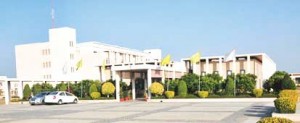 Principal: Dr Rajeev Kumar Chauhan
Principal: Dr Rajeev Kumar Chauhan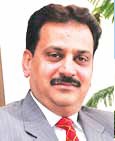 organisations in Gulf and India. He has been actively involved in all areas of education, including developing curriculum, student career preparation and developing evaluation methods. He is PhD in (Mathematics) from V.B.S Purvanchal University, Janunpur. Currently he serves as the Principal of Raffles International School, Behror.
organisations in Gulf and India. He has been actively involved in all areas of education, including developing curriculum, student career preparation and developing evaluation methods. He is PhD in (Mathematics) from V.B.S Purvanchal University, Janunpur. Currently he serves as the Principal of Raffles International School, Behror.


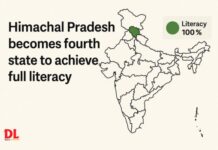
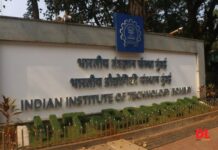

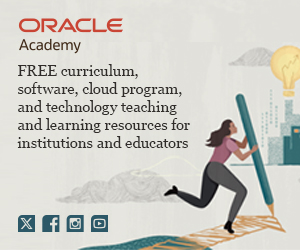

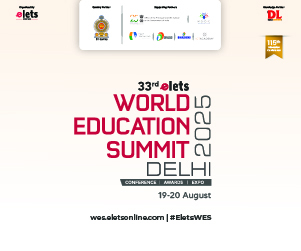
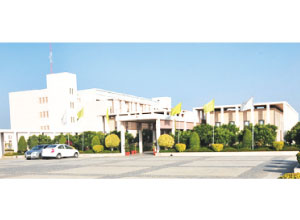

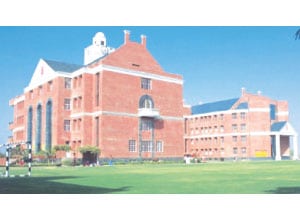
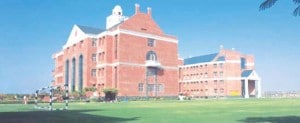
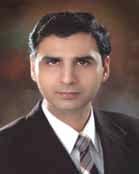

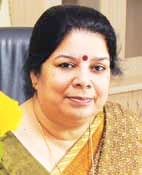


 K S Muralidhar
K S Muralidhar

 Rajiv Bhalla
Rajiv Bhalla
 Sanjeev Mansotra Chairman and Group CEO, CORE Group
Sanjeev Mansotra Chairman and Group CEO, CORE Group













